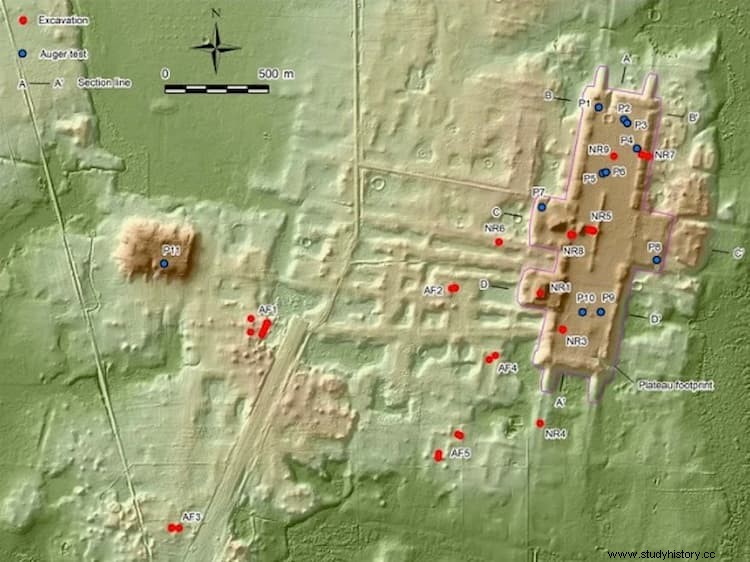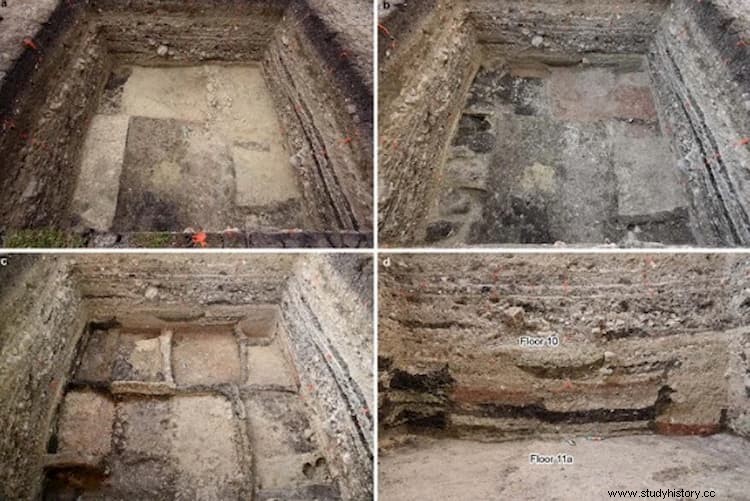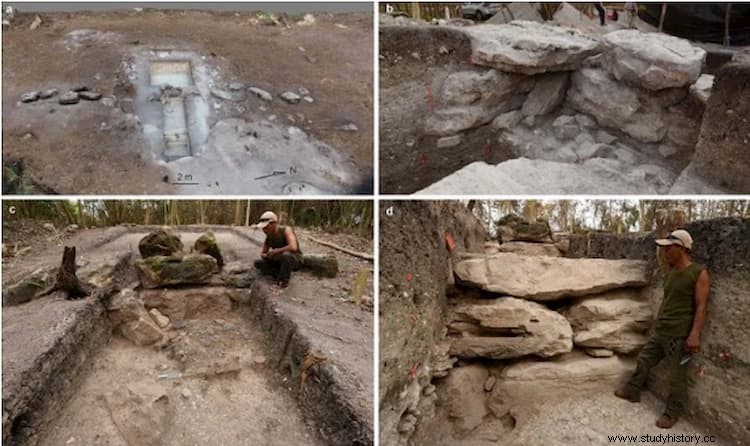From the ground, it is impossible to tell that the plateau underfoot is anything extraordinary. But from the sky, with laser eyes, and below the surface, with radiocarbon dating, it is clear that it is the largest and oldest Mayan monument ever discovered.
Located in Tabasco, Mexico, near the northwestern border of Guatemala, the newly discovered site of Aguada Fénix lurked below the surface, hidden for its size and low profile until 2017. The monument is almost 1,400 meters long, between 10 and 15 meters high and includes nine wide walkways.
It was discovered by an international team led by professors from the University of Arizona at the School of Anthropology Takeshi Inomata and Daniela Triadan, with the support of the university's Agnese Nelms Haury program and under the authorization of the National Institute of Anthropology and History of Mexico. .

They used LIDAR technology that uses laser-emitting equipment from an aircraft. Laser beams penetrate the treetops and their reflections off the ground surface reveal the three-dimensional shapes of archaeological features. The team then excavated the site and radiocarbon dated 69 samples to determine that it was built sometime between 1000 and 800 BC.
Until now, the Mayan site of Ceibal, built in 950 BC, was the oldest confirmed ceremonial center. This oldest monumental building in Aguada Fénix turned out to be the largest known in all of Mayan history, far surpassing the pyramids and palaces of later periods.

Using a low resolution lidar collected by the Mexican government, we became aware of this huge platform. We then did a high resolution lidar and confirmed the presence of a large building Inomata said. This area is developed – it's not the jungle; people live there – but this place was not known because it is so flat and huge. It just looks like a natural landscape. But with lidar, it comes across as a very well planned shape.
The discovery marks a time of great change in Mesoamerica and has several implications, Inomata said.
First, archaeologists traditionally thought that the Mayan civilization developed gradually. Until now, it was thought that the small Mayan villages began to appear between 1000 and 350 BC, which is known as the Middle Preclassic period, along with the use of pottery and some corn cultivation.
Second, the site resembles the ancient center of the Olmec civilization of San Lorenzo, in the western Mexican state of Veracruz, but the lack of stone sculptures related to rulers and elites, such as colossal heads and thrones, suggests a less social inequality than in San Lorenzo and highlights the importance of communal work in the early days of the Maya.

There has always been a debate about whether the Olmec civilization led to the development of the Mayan civilization or whether the Mayans developed independently Inomata said. Therefore, our study focuses on a key area between the two .
The period in which Aguada Fénix was built marked a gap in power – after the decline of San Lorenzo and before the rise of another Olmec center, La Venta. During this time, there was an exchange of new ideas, such as construction and architectural styles, between various regions of southern Mesoamerica. The extensive plateau and large causeways suggest the monument was built for the use of many people, Inomata said.
During later periods, there were powerful rulers and administrative systems in which the people were ordered to do the work. But this site is much older, and we don't see evidence of the presence of powerful elites. We believe that it is rather the result of communal work .
The fact that monumental buildings existed earlier than previously thought and when Mayan society had less social inequality makes archaeologists rethink the construction process.

It is not only the hierarchical social organization with the elite that makes monuments like this possible Inomata said. This type of understanding gives us important implications about human capacity, and the potential of human groups. You don't necessarily need a well-organized government to carry out these kinds of big projects. People can work together to achieve amazing results .
Inomata and his team will continue to work at Aguada Fénix and do a broader lidar analysis of the area. They want to collect information about the surrounding sites to understand how they interacted with the Olmecs and Mayans. They also want to focus on the residential areas around Aguada Fénix.
We have substantial information on the ceremonial construction , Inomata said, but we want to see how people lived during this period and what kind of lifestyle changes were happening around this time
